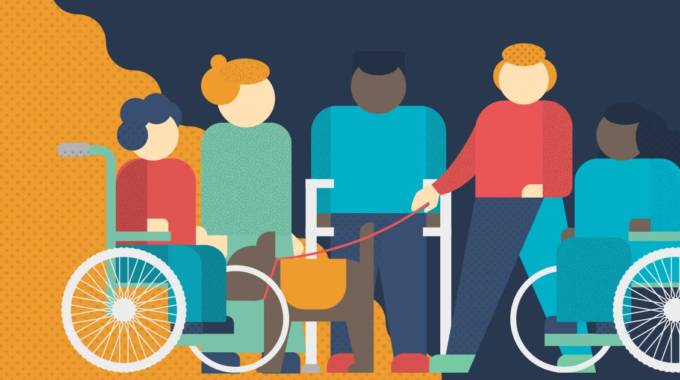
The Sunday Mail

Disability Issues
Dr Christine Peta
This article is a continuation of a series that began last week, in which we are unpacking the models that form part of the conceptual framework of the National Disability Policy of Zimbabwe.
The policy was launched on June 9, 2021 by President Mnangagwa.
The Department of Disability Affairs, in the Ministry of Public Service, Labour and Social Welfare, led by the Minister, Professor Paul Mavima, oversees the national disability agenda and thus the implementation of the National Disability Policy (2021).
This article unpacks the tenets of the intersectional model, to enable us to understand why the National Disability Policy is grounded in a conceptual framework that includes the intersectional model, as well as to encourage us to use the model in all relevant initiatives.
The intersectional model states that the identity of a person is not made up of one attribute, but of many interwoven attributes.
Disability, is just one attribute that a person may have, thus disability can only shape, but it cannot define a whole person.
In other words, disability is not the only “attribute” that persons with disabilities have. For example, some people think that persons with disabilities are genderless beings.
But, the reality is that just like everyone else persons with disabilities have gender and in addition, age, religion, class, culture, sexuality, ethnicity, intelligence and other attributes.
We should, therefore, not just focus on disability as if it is the only “thing” that persons with disabilities have, but we need to understand that persons with disabilities “sit” on an intersection of a diverse range of identity markers that frame their life experiences.
For example, if we just pay attention to disability and ignore gender, then the gendered needs of persons with disabilities will never be addressed — for instance circumcision for men with disabilities and maternal healthcare for women with disabilities.
Before the concept of intersectionality was introduced by law professor, Kimberlé Crenshaw, in 1989, many people were trying to find out which among the various identity markers such as gender, sex, culture, religion etcetera, was more important than the others.
So it was common to find that the fight against the appearance of one identity marker such as gender, would worsen the disunion in the others.
That is not to say we should take an additive, one-plus-one approach, which adds one identity marker to the other.
But, it is to say that we should recognise the simultaneous (at the same time) interaction of various identity markers in shaping the experiences of persons with disabilities in all facets of life.
For example, both disability and gender are social constructs that give form and shape to one another, so the two cannot be detached.
Crenshaw explains the notion of intersectionality by using the following metaphor:
“Intersectionality is what occurs when a woman (with disabilities) tries to navigate the main crossing in the city.
“The main highway (may be) ‘Racism Road’, one cross street ‘Colonialism Street’, then ‘Patriarchy Street’, then (Gender Based Violence Street).
She has to deal not only with one type of problem, but with all forms, those named as road signs, which link together to make a double, a triple, multiple, a many layered blanket of (problems).”
The other function of intersectionality is that it deals with the notion of difference, thus dismantling the traditional pattern of perceiving persons with disabilities as if they are all the same.
For example, the life experiences of a girl with albinism in rural Gokwe may not be similar to the life experiences of a girl with albinism in a Harare urban area.
Persons with disabilities do not share similar narratives of lived experiences of disability.
Way forward
In accordance with the provisions of the National Disability Policy of Zimbabwe (2021), there is need for us to achieve disability inclusion by applying the intersectional approach in policy and legislative making processes, as well as in programming.
In addition, movements including the feminist and disability movements, should seek to function with a wholesome knowledge of the power dynamics that are embedded in intersectionality.
That way the movements may be more proficient in accomplishing considerable change, that is likely to benefit persons with disabilities and their families.
In addition, we need to use the intersectional model as outlined in the National Disability Policy (2021) so that we become aware of the diversity of the experiences of persons with disabilities.
The belief that persons with disabilities are a homogenous group with similar desires, interests, needs and experiences, in spite of their location, culture, race, gender or class, is fallacious.
The intersectional model helps us to avoid “freezing” persons with disabilities into a monolithic object, but instead to come up with laws, policies and programs that meaningfully address their intersectional needs and concerns.
Dr Christine Peta is the National Director of Disability Affairs in Zimbabwe — she can be contacted on: [email protected]



